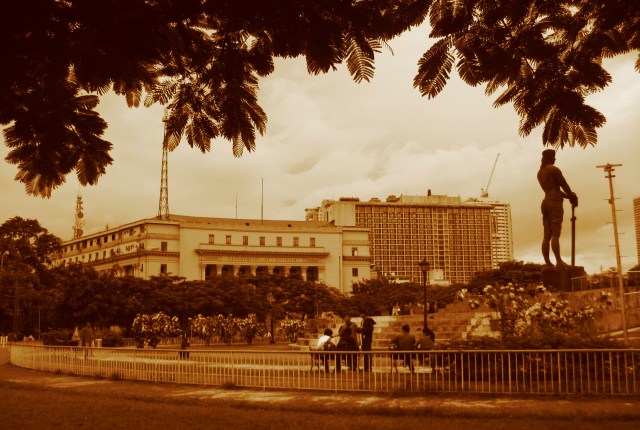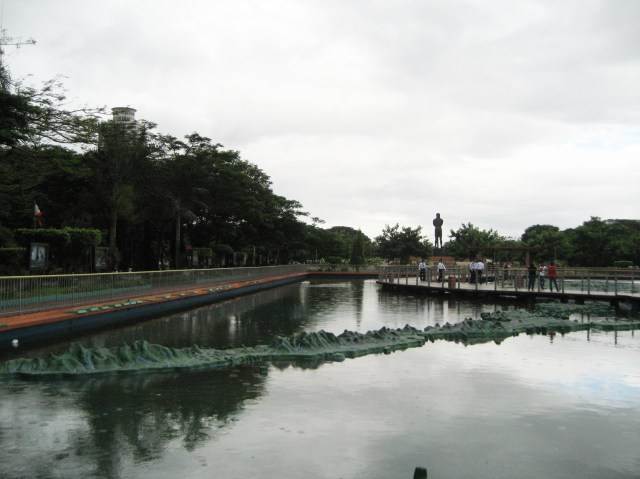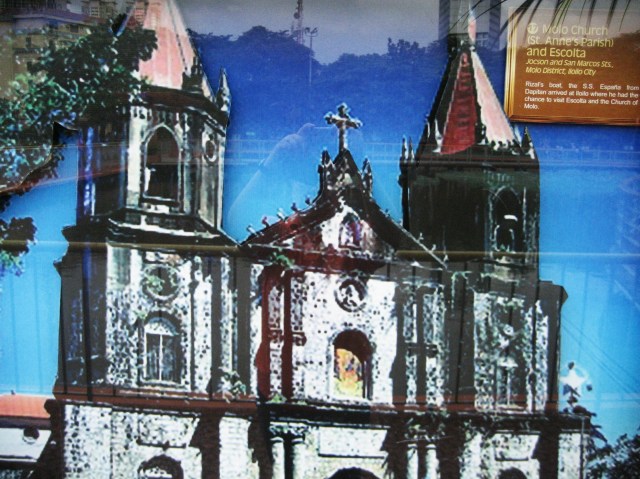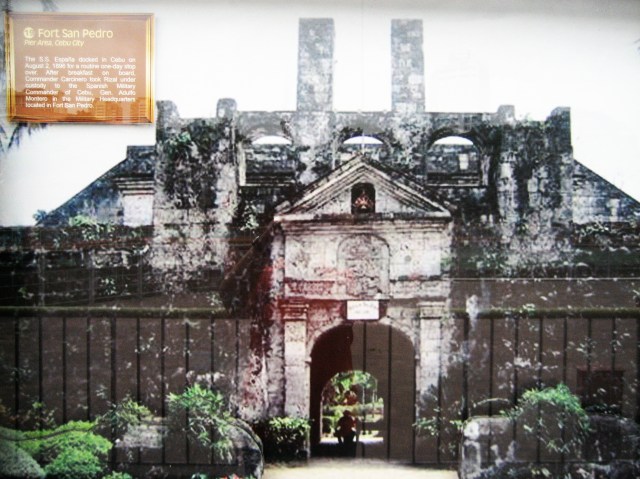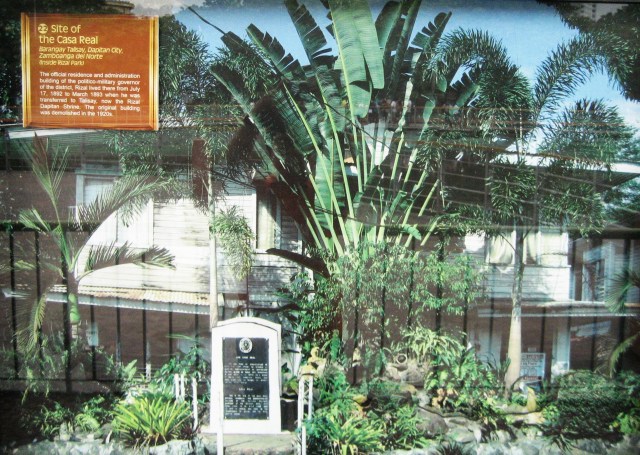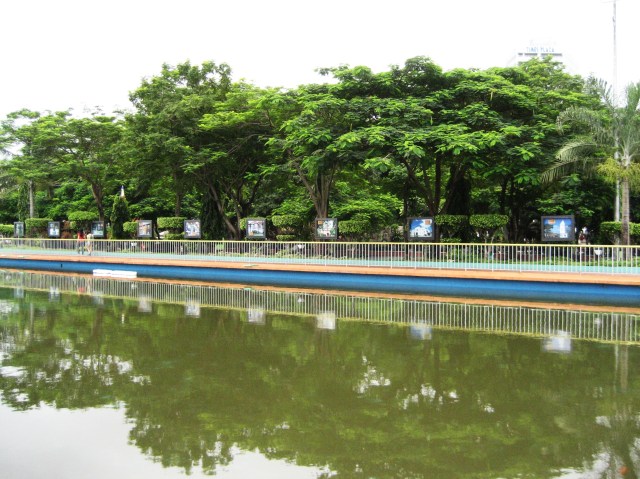If you don’t have the time and the resources to visit all the Lakbay Jose Rizal@150 Sites, or at the very least want a glimpse of what you can find there, you may wish to do this.
One morning I visited the National Museum, I found myself way too early before Museum hours and so I lingered around. First off, I checked out the Balangay Diwata ng Lahi behind the National Arts Gallery. Looking at this sea vessel makes you wonder how our ancestors rode the treacherous waters in open seas back then. Also reminds us that the ancient Pinoys were really a seafaring people and competent boat builders! Can you imagine them sailing based on their ancient methods of reading through the stars, cloud formations, and bird migration patterns?
An hour before the Museum doors opened to the public, and having viewed the Balangay, I wandered off behind the 2 Museum Buildings and found myself walking around the Agrifina Circle where one also finds the lovely Department of Tourism Building. Standing guard over all these art-deco buildings is a huge bronze statue of Lapu Lapu. Our likely first hero way before the Spaniards ruled the land, and most certainly way before the Americans “guided” us in choosing our heroes. ;-)
Off on one side a few meters away is a man-made pond where a huge relief map of the Philippines is to be found, right beside the Children’s Playground. All around this pond are glass-encased photos of various Rizal heritage sites named in the Lakbay Jose Rizal@150. Aptly called One-Stop Heritage Trail, it was unveiled only last May 2011. There is no excuse now not to learn more about these sites, if only to know our national hero better, appreciate his journey through life, his struggle, and his heroism.
I found myself moving from one encased photo to the next. Tried to get a decent photo, but this amateur had problems with the reflections on the glass. Epic fail. But I read through some of the relevant and interesting trivia on each encased photo and thought I’d share with you just the same these awful shots I took. Just think I’m saving you the trip. Or perhaps you can be motivated to go to get a ‘better picture’.
Rizal’s boat, the S.S. España arrived in Dumaguete City. Dr. Rizal went ashore, visited Governor Regal of Negros Occidental, visited a classmate Herrero Regidor and operated on the captain of the Civil Guard.
The same boat, the S.S. España, arrived at Iloilo where Dr. Rizal had the chance to visit Escolta and the Church of Molo in Iloilo.
Then the S.S. España docked in Cebu on August 2, 1896 for a routine one-day stop over. After breakfast on board, Commander Carcinero took Rizal under custody to the Spanish Military Commander of Cebu, Gen. Adulfo Montero in the Military Headquarters located in Fort San Pedro.
The official residence and administration building of the politico-military governor of the district, Rizal lived there from July 17, 1892 to March 1893 before he was transferred to Talisay, now the Rizal Dapitan Shrine.
A National Cultural Treasure in Dapitan, Zamboanga del Norte. Rizal created this map as an aid in teaching history and geography to the locals while in exile from 1892 to 1896.
I took notice of this lamp post. Love the base with the calesa design. Thought this lamp post is far better than all those multi-colored cheap-looking lightposts you find all over Metro Manila.
There were more photos on display around the pond where you see the relief map of the Philippines. But it is now time to head back to the Museum.



